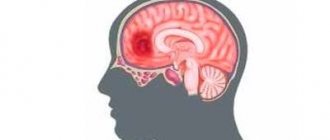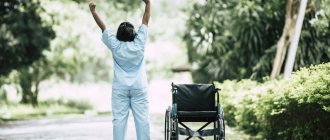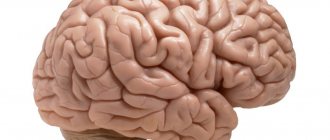What happens when there is a bruise? What are the symptoms and consequences of bruises? What is the most effective way to treat bruises?
A bruise is a closed injury to tissues and organs without significant disruption of their structure. This is the most common type of injury. Bruises the skin. The integrity of the upper layers of the skin is not damaged during a bruise, but a swelling and hematoma (bruise) quickly appear at the site of the impact, and pain is felt.
There are bruises of soft tissues , periosteum, joints, bruises of the neck, back, spine, chest, head. When a joint (for example, a knee) is bruised, its volume increases several hours after the injury, function is impaired, and pain intensifies (especially when moving). In this case, the leg is slightly bent, its extension is sharply painful. The difference between a joint bruise and a dislocation is the preservation of movement in it.
With bruises , there may be only a slight swelling (“bump”), which does not cause much trouble. However, if the injury was accompanied by loss of consciousness, weakness, nausea, vomiting, etc., then this may be a sign of a more serious injury - a concussion or even a brain contusion .
With bruises , in addition to damage to soft tissues, blood flow in the vessels passing here may be secondarily disrupted, which disrupts the blood supply to the brain.
With bruises of the back (spine), the blood circulation of the spinal cord may be impaired (there is a decrease in sensitivity in the limbs, muscle function, etc.).
With bruises of the chest, only local changes in the superficial soft tissues may be noted, but with a strong blow, for example, as a result of a fall, breathing may be impaired, and with blows to the heart area it may stop. Abdominal bruise is sometimes accompanied by damage to internal organs (for example, rupture of the liver, spleen, accompanied by internal bleeding).
What happens when you get hurt
When a bruise occurs, damage to the skin, subcutaneous fat and muscles occurs, and the blood vessels and nerves passing through them can also be damaged. Blood leaks from injured vessels. With soft tissue bruises, hemorrhage increases at the site of injury and a more or less pronounced swelling forms. Blood gradually permeates the tissues and can accumulate (hematoma) or flow into nearby cavities, such as a joint (hemarthrosis).
Bleeding from small vessels stops spontaneously in about 5-10 minutes. Of the large ones, it can last more than a day. The color of the bruise depends on the age of the injury: a fresh one has a purple-bluish color, after 3-4 days it becomes blue-yellow, and on the 5-6th day it turns yellow. At the site of the bruise , a swelling - edema - always appears, pain occurs, which passes over time, but unpleasant sensations when moving or palpating persist for a long time. With severe bruises , disruption of the functioning of nearby organs is possible.
As a result of a bruise of the lower leg in places where the skin and subcutaneous tissue are adjacent to the bone, necrosis of the skin and its subsequent rejection are possible. When hitting bones that are poorly protected by soft tissue, not only very painful bruises of the periosteum with its detachment occur, but also bone damage (cracks and fractures). A blow in an oblique direction relative to the surface of the skin can cause its detachment along with subcutaneous tissue, followed by filling of the resulting cavity with lymph and blood.
Material and methods
A pilot prospective comparative study was conducted, which included 54 patients with soft tissue contusion of the shoulder (n=27) and hip (n=27). Bruises in all patients were characterized by the formation of subcutaneous or intradermal hemorrhage, swelling of soft tissues without muscle damage. Inclusion criteria
: age 25–50 years, compensated comorbid pathology.
Non-inclusion criteria
: decompensated concomitant pathology or requiring constant medical support; severe soft tissue damage; the injury is more than 1 day old; self-administration of analgesics and other medications for pain relief before the initial visit. All patients signed informed consent to participate in the study.
During the initial examination, all patients underwent an ultrasound examination of the injury site to exclude more severe pathology. Soft tissue swelling was assessed at each visit using the circumference of the injured limb segment, measured in the upper, middle, and lower thirds, and compared with the uninjured limb. Functional recovery was assessed by the patient's ability to flex the elbow and shoulder joint and squat at least 10 times, as well as hold a 2.5 kg load for more than 2 minutes in an outstretched arm.
Depending on the form of the drugs received, patients were divided into 8 groups. Group 1 (n=6) - patients with upper limb injuries who received ketoprofen tablets (Ketonal®) at a dosage of 100 mg once a day; Group 2 - patients with damage to the upper limb (n=6) who received diclofenac tablets at a daily dosage of 100 mg; Group 3 (n=7) - patients with damage to the lower extremity who received ketoprofen tablets at a dosage of 100 mg once a day; Group 4 (n=7) - patients with lower limb injuries who received diclofenac tablets at a dosage of 100 mg; Group 5 (n=7) - patients with injuries to the upper limb, for whose supervision they used the injection form of ketoprofen at a daily dosage of 100 mg; Group 6 (n=7) - patients with injuries to the upper limb, in whose treatment an injectable form of diclofenac 100 mg was used; Group 7 (n=7) - patients with injuries to the lower limb who received ketoprofen by injection at a dose of 100 mg; Group 8 (n=7) - patients with injuries to the lower limb and the use of an injectable form of diclofenac.
In all patients, in addition to analgesic therapy, on the 1st day the injury site was immobilized with a tight bandage and cooling procedures were applied. At the second visit (on the 2nd day and daily thereafter), the intensity of pain was assessed according to VAS, and the severity of edema. Treatment and monitoring of patients was stopped when a stable analgesic effect was achieved (according to VAS), there was no increase in soft tissue edema, and limb function was restored.
Bruises: symptoms and consequences. Why is a bruise dangerous?
The main symptoms of a bruise are: pain in the damaged area, hemorrhages as a result of rupture of blood vessels, the formation of hematoma and edema. Very severe pain after a bruise may mean that the bones are damaged. Pain, the first symptom of a bruise , appears immediately at the time of injury and can be significant. Then the pain decreases somewhat or is moderate in nature, and 1-3 hours after the injury it resumes or significantly intensifies. A change in the nature of pain and an increase in their intensity are caused by increased traumatic swelling, hemorrhage or an increase in hematoma.
When is bruised , movements in the joints are initially preserved, but they become impossible as hemorrhage and swelling increase, especially with hemarthrosis. This bruises from fractures and dislocations, in which active and passive movements become impossible immediately after the injury.
The pain is especially sharp when is bruised , for example when the anterior surface of the leg or ulnar nerve is bruised. Due to severe pain, pain shock may occur. Hemorrhages at the site of a bruise can be pinpoint, both in the skin and subcutaneous tissue, in the form of bruises, as well as in the form of significant accumulations of blood in the underlying tissues (hematomas). Bleeding that continues deep into the tissue often leads to additional trauma to adjacent tissues as a result of their compression, which is accompanied by a gradual increase in pain and dysfunction.
The time of bruising depends on the depth of the hemorrhage. When are bruised , it appears immediately, in the first minutes or hours. When a muscle or periosteum is bruised, bruises appear on the 2-3rd day and sometimes far from the site of the bruise. The appearance of late bruises, especially far from the site of injury , is a serious symptom and requires additional examination, for example, x-ray, to exclude a fracture or crack of the bone. The color of the bruise undergoes certain changes due to the breakdown of hemoglobin. A fresh bruise is red, then it turns purple, turns blue, after 5-6 days it turns green and then yellow. The color of the bruise can indicate how long ago the injury was.
Questions and answers - Temperature in a child
Izyakov Dmitry Nikolaevich
Pediatrician
April 25, 2021
In 2015, in the series of clinical recommendations of the Union of Pediatricians of Russia, the collection “Feverish Child” was published. Diagnostic and treatment protocols." It revises some points regarding the actions of doctors and parents when the temperature rises in children with various diseases. In this article, I tried to collect answers to the most frequently asked questions by parents, taking into account modern recommendations and practical experience.
What temperature is a reason to panic?
What you don't need is panic. According to modern data, only temperatures above 40 degrees can harm children with chronic diseases.
Initially healthy children tolerate high fever without health consequences. A healthy child is simply not able to heat himself up to dangerous levels. But it can be heated this way from the outside, by wrong actions. For example, with a normal fever, cover with a blanket when the air temperature in the room is above 22°C. But this is no longer a fever, but hyperthermia, a condition in which you need to call an ambulance. The main difference is that antipyretics and rubdowns do not help.
But does a high temperature indicate a dangerous disease?
In children, it is not the thermometer numbers that indicate danger. It is not the temperature that is dangerous, but the disease that caused it. A high temperature can also occur with an uncomplicated acute respiratory viral infection, which will subside in 2-3 days. Or in case of a safe childhood infection - sudden exanthema, also called: roseola, three-day fever, temperature is often 40-41°C. And with a dangerous disease, meningitis, it can often not exceed 39.5. There are also dangerous diseases accompanied by fever. This is what requires calling an ambulance:
- age up to 3 months
- the appearance, along with cold hands and feet, of a “marble” pattern on “goose bumps”
- absence of visible signs of illness, except for elevated temperature in a child under 3 years of age
- maintaining a temperature above 38.5 on the 4th day of illness with the appearance of rapid breathing
- skin rash that does not blanching when pressed with a finger
- inability to press the chin to the chest and/or bulging fontanelle
- abdominal pain
- pain in the legs and/or arms
- the temperature 2 hours after taking the antipyretic drug became higher, this is a sign of overheating - hyperthermia.
What about cramps?
They are observed in approximately four children out of a hundred and do not directly depend on the height of the temperature rise. In addition, they are not hazardous to health, although they undoubtedly frighten parents very much. Help for febrile seizures is to turn your head to the side and provide access to fresh air. All necessary medications are administered by an ambulance doctor, who must be called and met by another adult.
And is there really nothing dangerous about high temperatures?
Yes, this is dehydration - loss of fluid due to evaporation through breathing and sweat. When a child has a fever, it is difficult to persuade a child to drink, but it is at this moment that he needs it.
What about cold hands and feet?
Most often, this is a short-term phenomenon that does not require medical intervention and does not pose a threat to health.
How much do you need to lower the temperature?
1-1.5 degrees is enough, because only by raising the temperature does the child’s body fight infection.
At what thermometer readings should antipyretics be given?
I give general recommendations; you need to consult with the doctor who is treating your particular child.
- In children under 3 months of age - from 38°C
- In children older than 3 months who do not have chronic diseases - from 39°C
- In children with diseases of the brain, heart and lungs - from 38.5°C
Are these numbers the only basis?
No. The numbers on the thermometer do not matter when starting to take an antipyretic if the child:
- does not tolerate high temperatures very well, behaves restlessly
- has a “marbled” pattern on pale “goose bumps”
- trembles, he gets chills
What medications should I use?
Only based on ibuprofen and paracetamol, the names of the active substance are always indicated on the packaging under the antipyretic brand.
Why don't they help?
The most common reason is incorrect dosage, calculating the dose based on the child’s age and not on the weight of the child. The second common cause is dehydration. Third - the child is dressed too warmly, covered, the room is warm.
What dose should I give?
The most popular antipyretic based on ibuprofen is “Nurofen for children” in the form of syrup. You need to divide the child's weight in kilograms in half. For example, if the weight is 10 kg, then 10:2 = 5 ml of children's Nurofen and should be given to him. This dose can be repeated no earlier than 8 hours have passed.
The most successful antipyretic in terms of release form is “Efferalgan” syrup for children with the active ingredient paracetamol. Its measuring spoon allows you to take the dose of medicine directly by weight, without calculating it in mg.
All other drugs “Panadol”, “Calpol”, “Paracetamol” syrup, etc. require mathematical operations, multiplying the weight by 0.6. For example, if a child weighs 10 kg, then 10 * 0.6 = 6 ml of Panadol should be given. This dose can be repeated after 6 hours.
Is it possible to alternate them?
It is possible, but at least 2 hours should pass between taking paracetamol and ibuprofen. If taken together, there is a risk of kidney damage.
Why not other medications for fever?
Medical studies have not revealed any real benefits from other drugs, but they have identified the harm of each:
- “No-spa” has no effect on cold hands and feet, but it has a list of side effects.
- "Analgin" is dangerous for the development of loss of consciousness and should not be used by parents without the presence of ambulance and emergency services workers.
- Nise caused liver damage in one of the 250 patients who took it
- Aspirin can cause liver and brain damage in children
How much fluid do you need to drink to reduce your temperature?
For every kilogram of weight, a child needs to drink 4 ml per hour. That is, if a child weighs 10 kg, then every hour he should drink at least 10 * 4 = 40 ml.
Is it possible to wipe?
After taking an antipyretic, you can wipe with water at a temperature 1-2 degrees lower than the child’s body temperature. That is, if it is 40 °C, then the water temperature should be 38-39 °C. You need to wipe all areas of the skin that are hot to the touch, leaving them wet until dry. Then measure the temperature again. A decrease of 1-1.5 degrees is enough to stop the procedure.
What to do with cold hands and feet?
They need to be carefully warmed, gently rubbing until the skin becomes slightly red, using wool, a terry towel, or just your palms.
How long to expect the effect of antipyretic and rubdown?
Two hours. If the temperature has not decreased, then a second antipyretic should be given, and rubbing and drinking should continue for another 2 hours. If the temperature has not decreased and/or has increased, call an ambulance.
How can the ambulance help?
Assess the child’s condition and determine whether hospitalization is necessary in this case. Provide assistance by injecting medications and medical methods to reduce the child’s temperature. It is for fever, in fact, it is needed in a very small percentage of cases, the ineffectiveness of antipyretics associated with hyperthermia - a condition complicating fever, when the child is not able to give off body heat.
How to measure temperature correctly?
Measuring armpit temperature with a mercury glass thermometer in children has already been recognized as the least preferable due to the danger of breaking it. It was replaced by electronic and infrared thermometers. Few people know, but to obtain a result comparable to a mercury thermometer, the electronic one must be under the armpit for the same time. That is, 5 minutes if the child was at room temperature. And 10 minutes if it was at a lower temperature before measurement.
Why do electronic thermometers show lower temperatures?
The reasons are clear: loose pressure, measurement less than 5 minutes, sweat, spasm of skin blood vessels, low battery, lack of factory settings for measuring skin temperature. These thermometers can be used subject to correction. To do this, an adult without a fever puts an electronic one under one armpit and a mercury one under the other. Measures 5 minutes and compares. For example, we received 35.6 and 36.6, respectively. In subsequent electronic measurements you will add 1 degree.
Which thermometer is better?
The temple area has a temperature equal to the axillary one. To measure it, infrared thermometers are used. This is the most optimal method for parents today. For proper use, you need much fewer subtleties: wipe the sweat from your temple, remove your hair, hold it at the correct distance (indicated in the instructions), change the battery on time, set up to measure the temperature of the temporal region (also written in the instructions). The use of other thermometers: nipple, ear, forehead strips is fraught with measurement errors in the direction of underestimation or false increase.
How often should I measure my temperature?
A child with a fever needs temperature control:
- every 6 hours unless antipyretics are required
- every 4 hours when used effectively
- every 2 hours if use is ineffective.
For a child with normal temperature, but with an acute illness, measure every 12 hours in the evening. For a healthy child at risk of an acute illness due to contact or an increase in temperature for vaccination, according to the condition, for control, measure once a day, in the evening. Healthy children without risk of illness do not need it.
Treatment of bruises
First aid for bruise
It is very important in the first hours after a bruise to understand whether the bones, joints and internal organs are damaged, whether there are any fractures, so it is better to consult a traumatologist. Immediately after an injury, it is recommended to apply a pressure bandage to the site of the bruise and create rest; for example, if a hand is bruised, its rest can be ensured with the help of a scarf bandage. If there are abrasions or scratches at the site of the injury , you must first use disinfectants. If the leg is bruised, it is given an elevated position, a gentle load regime is observed for several days, and then, as the pain and swelling decrease, it is gradually expanded. Under no circumstances should you steam your leg or arm - this may aggravate the injury. On the first day, bruises are treated exclusively with cold; its effect causes vasoconstriction, which stops bleeding, and in addition, has an analgesic effect.
Treatment of bruises in the acute period
After 24 hours, refrigeration is no longer necessary. Then you need to use another tactic - warming: warm baths, compresses, lotions help reduce swelling and resolve the hematoma. At this stage of treatment of bruises, NANOPLAST forte, a therapeutic pain-relieving anti-inflammatory plaster, can be used very effectively. Read more >>>
Thanks to its unique properties, the NANOPLAST forte medical plaster not only has an analgesic effect, but also improves blood circulation in the injured area and accelerates the resorption of hematomas. The course of treatment usually ranges from 3 to 9 days.
Treatment of bruises: rehabilitation therapy for bruises
You cannot rub the bruised area yourself - this can lead to a serious complication - thrombophlebitis (blockage of a vein with a blood clot). If swelling and bruising do not disappear for a long time, you should consult a doctor. In case of moderate and severe bruises, a course of physiotherapy using UHF devices, a magnet, and electrophoresis with medicinal solutions will be recommended.
Read more about NANOPLAST forte
Results and discussion
The average age of the patients was 44.7 years. The ratio of men to women was 1:1.
As can be seen in Figure 1, with bruises of the upper limb, ketoprofen tablets began to show its activity already at the 10th minute, with bruises of the lower limb - somewhat later, at the 20th minute. The use of the injection form (Fig. 2) provided a pronounced analgesic effect already at the 5th minute. Both tablet and injection forms of ketoprofen demonstrated an advantage over diclofenac. By 3–4 days, in all cases it was possible to achieve complete pain relief. The duration of the analgesic effect of the drugs was not studied due to the large psycho-emotional component and the small sample of patients. A peculiarity of the assessment of pain syndrome at the initial visit was that patients with a shoulder injury rated pain 2–3 points higher than patients with a hip injury (6–8 points).
I would like to note that, despite the effectiveness of the injection form of the drug, the tablet form remained the form of choice for patients with arm injuries, according to the survey. In patients with leg injuries, the injection form was preferred. Here we have to state a paradox: with a more severe pain syndrome due to a bruise of the upper limb, a more effective injection form is used much less frequently than in patients with damage to the lower limb.
Prevention of low body temperature
- If you have chronic diseases, carefully monitor your well-being. Visit your doctor regularly and follow all his instructions.
- Strengthen your immune system. Eat a balanced diet and take a course of vitamins at least twice a year – in autumn and spring.
- When relaxing on the sea or river, do not stay in the water for too long. When you go ashore, immediately dry yourself with a towel. Small children should be changed into dry clothes immediately.
- Do not create drafts in the apartment. 10-15 minutes for ventilation is enough.
- Always dress appropriately for the weather. Don't be outside in wet clothes.
- If, due to circumstances, you are forced to spend a lot of time in the same position, give yourself five-minute exercise sessions at least once every two hours.
Causes of low temperature
- Exacerbation of chronic diseases, for example, vegetative-vascular dystonia.
- Insufficient production of thyroid hormones – hypothyroidism.
- Pathologies of the adrenal glands.
- Pregnancy.
- Taking certain medications, especially antipyretics and vasoconstrictors.
- Low blood pressure, heart disease.
- General fatigue, poor sleep, depression, stress.
- Recent viral or bacterial infections.
- Anemia.
- Fasting and strict diets that caused a lack of vitamins and nutrients.
- Sepsis.
- Skin diseases affecting large areas of the body.
- Poisoning with alcohol and drugs.
- Presence of HIV infection.
There are also external reasons for a decrease in body temperature - a long stay in water, in the wind, in a cold room with drafts, staying in the same position.
What can you do before seeing a doctor?
Raising your body temperature must be done very carefully. A sudden change in thermal conditions can lead to serious consequences.
- If the cause of low body temperature is hypothermia, place the frozen person in a warm room, change him into dry clothes, cover him with a blanket and give him warm sweet tea.
- Hot baths, tea, and intense rubbing of body parts can be harmful. Drinking strong alcoholic drinks is also highly undesirable.
- A small child should be fed, given a warm drink, hugged and warmed with your own warmth.
- If you're just overtired, take a break from what you're doing. Take two or three days off: get enough sleep, take a bath, walk in the fresh air. After such a complete rest, normal body temperature will be restored naturally.










